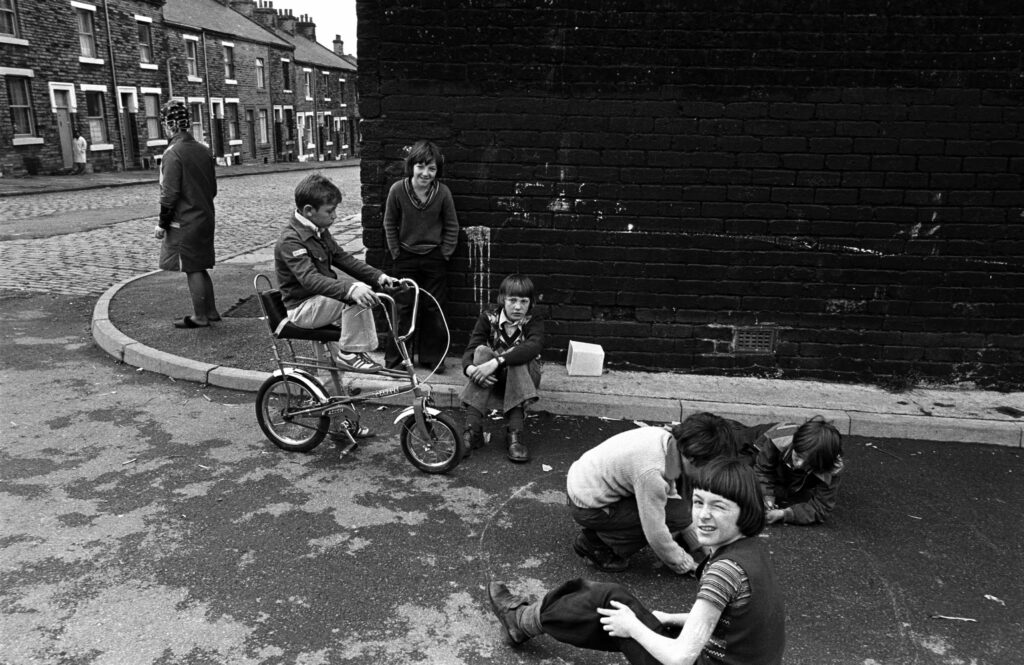
Street corner off Thornton Road, Bradford, 1977 © Ian Beesley
The Bradford artist’s early output was created walking the streets, capturing an industrial society that is now extinct: kids playing, ladies talking in terraced streets and grafters working at full pelt
Bradford-born Ian Beesley has been documenting his home city for over 45 years. His early work in the late-1970s captured the everyday lives of working- class people: kids playing street games, fans chanting for Bradford City FC, and grafters employed in vast Victorian factories. In the 1980s, he proceeded to document the demise of heavy industries, such as mining, iron and steel production. Published by Bluecoat Press, Beesley’s upcoming photobook Life will present his record of Bradford’s shifting social landscape.
“I always try to give people a print when I have photographed them, and having a connection with the people I am photographing is at the core of my practice”
How did you discover photography?
My dad was a keen amateur photographer, so I used to help him develop films in our kitchen from an early age. I left school and worked in a series of labouring jobs, where my fellow workers encouraged me to find a career. Rather than getting trapped in a cycle of unskilled labour, I bought my first camera and went to art college.
How has Bradford changed over the past 45 years?
The city has struggled with the demise of traditional industry, poor transport links and a lack of investment. It has slowly declined into one of the poorest areas in the UK. Over the last 45 years I have documented this demise of industry in the north, its impact on society, and the closure of the mills, mines and foundries. My work is part of the wider picture on how northern industrial cities have been affected by the political and financial decisions made in Westminster.
Who is your work for?
I take photographs for the people – working people, who are often overlooked. I always try to give people a print when I have photographed them, and having a connection with the people I am photographing is at the core of my practice. I also try and keep in contact with many of the people I have photographed. It’s only fair if I am going to exhibit or publish their photo that they should be kept informed.
Could you tell us the story behind the image above?
I took this photo in the late-1970s. I spent days walking the streets of inner-city Bradford photographing children playing street games. This group were playing marbles. Their mother came out to see what I was doing. I told her the purpose of the photos and she was quite happy to chat. The boy at the back with his hands in his pockets got in touch this year after he saw the photo on the BBC. He couldn’t remember me taking it, but he recalls his mum speaking of a strange man with a camera, and how she saw him off with a yard brush. He always wondered if that was true as she had a copy of the photo on her mantelpiece. In October, he came to my exhibition at Salt Mills in Bradford with his family and took pride in showing his grandkids where he used to live.
The post Ian Beesley: ‘I take photographs for the people – working people, who are often overlooked’ appeared first on 1854 Photography.




